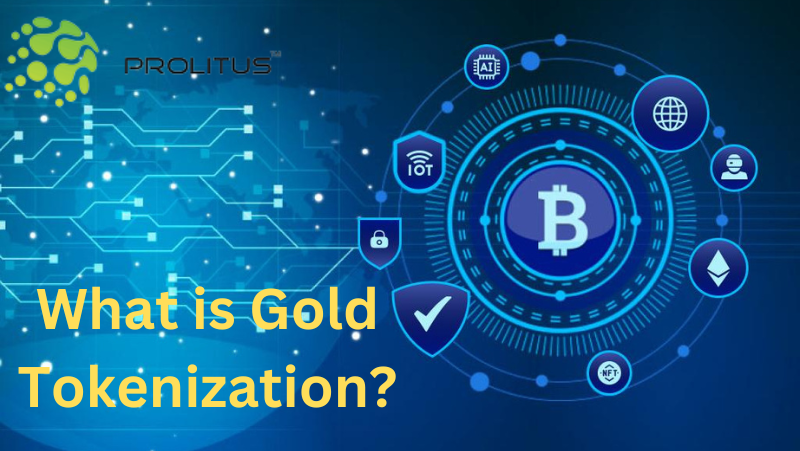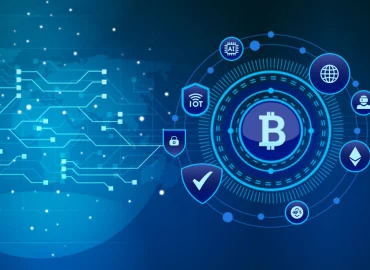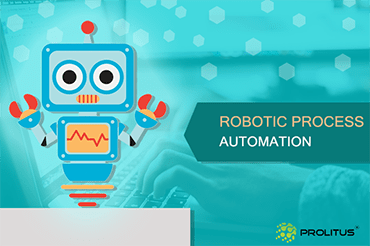With a rich history as one of the earliest forms of currency and a means to amass financial capital, gold is experiencing a resurgence in importance. The backdrop of a global pandemic and the ominous prediction that the worst of the financial crisis lies ahead has fueled a renewed interest in gold as a substitute for the volatility of stocks. Since July 2020, there has been a notable surge in gold investments, capturing the serious consideration of nearly half of surveyed Americans. Recognizing this growing demand, some challenger banks are streamlining their procedures to accommodate eager buyers. Concurrently, investors are diversifying their options by exploring the potential of blockchain-based tokens as part of their investment portfolios.
Why gold has gained popularity throughout history
While gold may carry a substantial weight in its physical state, its resilience to corrosion and its unresponsiveness to common chemical substances like water or air add to its allure. Notably, it remains impervious to tarnishing, distinguishing it from silver, a once-popular metal for transactions. Gold boasts the highest ductility among all metals, allowing it to be easily shaped and divided into various forms. Its rarity strikes a delicate balance—sufficiently scarce to command high value yet not so elusive as to be unattainable.
Despite not being directly tethered to any global monetary system, gold enjoys popularity as a sought-after investment material. The necessity for physical mining ensures its supply cannot be artificially increased, in stark contrast to the printing of extra currency by governments. This intrinsic characteristic has fueled the growing popularity of gold investment, offering a tangible alternative to conventional monetary dealings involving banks or hedge funds. Investors now have the opportunity to enhance the value of their assets by exploring the realm of… tokens.
What is going on right now with gold and tokens?
At present, the explosive trend of shifting away from traditional fiat currencies towards blockchain-based alternatives, such as Bitcoin or Dogecoin, is unmistakable. In April 2021, the value of one Bitcoin soared to an impressive range of $50,000 to $65,000. However, this surge in value comes hand in hand with volatility, as prices exhibit significant fluctuations influenced by current events. The noteworthy aspect lies in Bitcoin, Dogecoin, and Ethereum exemplifying a more inclusive financial future, opening doors for anyone willing to engage. This paradigm shift has prompted a surge of interest as individuals increasingly scrutinize the prospect of digitizing their investments.
Digital cryptocurrency can help back up real-life assets
Consequently, there’s a notable surge in the practice of asset tokenization, founded on the principle that all tangible and intangible real-life assets can undergo conversion into digital tokens. These tokens are then divisible into fractions, ushering in an era where everyone can claim ownership of a portion of an asset they desire without necessitating a substantial financial capital. Notably, the value of these digital assets mirrors their real-life counterparts, irrespective of their nature, providing a stability that contrasts with the volatility often associated with cryptocurrencies. This approach resembles traditional investing, with the added dimension that all transaction data is securely stored within the confines of the blockchain.
Safety of data is on the spot
The adoption of blockchain-based technologies ensures the secure recording of all transactions. The immutability of data within this framework eliminates the possibility of falsification, as no individual can modify the information. The process of selling tokens within this context guarantees a transparent exchange – the seller receives the funds while the buyer obtains a token with a steadfast value that is resistant to easy fluctuations. This robust and tamper-proof system enhances the integrity of transactions, providing both parties with a level of assurance and transparency that traditional methods often struggle to match.
Less costs, more effectiveness
This technology not only streamlines processes but also facilitates automation, offering heightened visibility and transparency in operations. Importantly, it alleviates the need for additional expenditures on software, banks, or intermediaries. Traditional investments often incur substantial costs, with formalities complicating transactions involving assets like gold, silver, or real estate. These formalities may entail professional verification checks on transaction-related documents, as well as assessments of investor eligibility and financial status. Blockchain serves as a remedy to these challenges by providing a secure and immutable record-keeping system.
The impact of this transformation is significant, with projections suggesting that over $544 trillion worth of assets worldwide could transition to tokenized forms in the foreseeable future. This represents a substantial shift in the financial landscape, signaling a growing recognition of the efficiencies and advantages offered by blockchain-based systems in asset management and investment.
Investing in digital gold
In the realm of digital possibilities presented by tokenization, individuals are opting to convert diverse assets, ranging from real estate to Tweets, into digital forms with the aim of augmenting their financial portfolios. However, not everyone is prepared to embrace these avant-garde investments. Some individuals view blockchain-based technologies as a strategic approach to invest in goods without navigating the complexities of multiple agreements or contending with various intermediaries, such as lawyers or financial institutions.
Despite the appeal of innovative assets, there is a prevalent desire for stability among investors. Traditional options, like Bitcoin, are deemed too volatile, while the value of intangible assets, such as fine arts that lack physical ownership, can be too abstract. For those who are open to embracing blockchain technology but prefer a more conservative approach, the tokenization of gold emerges as an ideal solution. As highlighted earlier, gold stands not only as one of the oldest currencies in history but continues to be highly valued, offering a stable and reliable investment avenue for those seeking a balance between innovation and tradition.
Physical gold creates physical issues
Venturing into digital gold investments serves as a comprehensive solution to numerous challenges associated with physical gold ownership. In contrast to the conventional requirements imposed by banks and legal procedures, blockchain introduces a streamlined process with fewer formalities. The immutability inherent in blockchain technology ensures that all investment data is securely recorded and impervious to alterations. This departure from traditional methods not only simplifies the investment process but also guarantees the integrity and permanence of recorded information, providing investors with a more efficient and secure avenue for engaging with gold assets in the digital realm.
Gold is heavy
A historical concern linked to acquiring this precious metal has been the formidable challenges posed by its size and weight. Unlike smaller valuables that can be discreetly stowed in a sock or an old box, gold’s substantial mass makes it impractical to hide and exposes it to heightened risks of theft. Even with insurance coverage against potential thefts, the protection afforded may prove inadequate, particularly for more valuable items, and gold undoubtedly falls into this category. Storing gold in the form of jewelry also introduces risks, as the ease of losing small pieces becomes a tangible concern, compounded by the emotional attachments often associated with these items, especially if they were gifted.
Bank safes are not that safe
Many envision a scenario where vast quantities of gold bars are securely tucked away in bank vaults. While this traditional approach is undeniably a viable solution, it often comes with limitations, primarily accessible when the investment is conducted through a bank. Yet, concerns persist among many regarding the resilience of banks during a global financial crisis, raising fears that access to gold might be curtailed in the event of a shutdown. Compounding these worries, in certain countries, the safety of bank safe boxes lacks legal protection, exposing customers to the disconcerting possibility of losing their lifetime investments if theft or mishaps occur.
Private vaults – private issues
To address these concerns, a growing presence of private vault operators worldwide has emerged. However, placing trust in these entities proves to be a nuanced challenge. The risk looms that if the vault operator faces bankruptcy, the stored gold could either vanish or be utilized to settle the company’s debts. Opting to store gold in a remote location outside the country introduces additional complications, potentially making retrieval challenging before the assets become inaccessible. Moreover, the actual storage process incurs substantial costs, further adding to the expenses associated with both purchasing and safeguarding gold.
Digital gold brings solutions to storage issues
As evident, while acquiring gold presents itself as a secure investment in terms of its enduring value, the challenges associated with finding suitable storage can introduce significant stress. It’s no surprise, then, that blockchain-based gold investments are gaining heightened attention. This interest extends beyond seasoned professional investors, encompassing beginners who may lack the financial capacity to purchase entire gold bars but are keen to initiate their investment journey. The fractionalization of digital assets plays a pivotal role in this context, offering individuals the flexibility to own a fraction of a specific asset, making gold investment more accessible and inclusive.
Blockchain is available 24/7
In contrast to investing in stocks, metals like gold instill investors with greater confidence amid the uncertainties of the global financial landscape. The blockchain operates ceaselessly, 24/7, without being bound by the constraints of weekdays, weekends, or bank holidays. Unlike stock exchanges, which adhere to specific operating hours, the blockchain’s accessibility is not limited by time. Crucially, it operates independently of hedge fund control and is readily accessible via the internet, increasingly considered a ubiquitous commodity. This inherent inclusivity and democratic nature distinguish the blockchain, providing investors with a flexible and accessible platform to navigate the dynamic world of financial investments.
There are some risks, though
Nevertheless, like any investment, digital gold carries certain risks. Despite the meticulous recording of smart contracts and transactions in the blockchain, establishing concrete connections to real-life assets becomes imperative. This verification becomes particularly crucial in unforeseen circumstances, such as theft or natural disasters affecting the storage location. A tangible proof, like a physical certificate of ownership from the seller, can serve as an example, but seeking validation from a legal professional adds an extra layer of assurance.
Another risk lies in the uncertainty surrounding the consequences of making gold investment widely accessible. While it fosters inclusiveness and democratization, there exists the potential for a decrease in the metal’s value. This scenario unfolds as investors multiply their fractionalized shares, introducing a variable that remains unpredictable and poses challenges for both seasoned and novice investors navigating the evolving landscape of digital gold.
What are the existing gold-backed tokens?
Still, gold-backed tokens are on the rise, entering new markets and providing more people with the opportunity to invest their smaller or larger fortunes in something that is considered a stable currency – and that is not going to change for a little while.
Example gold-backed tokens include:
- Tether Gold (XAUt)
- DigixGlobal (DGX)
- Meld Gold
- Perth Mint Gold Token (PMGT)
- Gold Coin (GLC)
- PAX Gold (PAXG)
Tokenizing gold from a technical point of view
In the contemporary landscape, it’s common for various entities, ranging from local stores to national airlines, to implement their own loyalty programs. The concept is straightforward: accumulate points and convert them into specific rewards. Tokenizing an asset draws a parallel to this process – it involves issuing a blockchain-based token that symbolizes a tangible entity, be it gold, silver, or a painting. This comparison underscores the fundamental similarity between the principles of loyalty programs and the issuance of blockchain tokens, both designed to represent and incentivize real-world assets.
What does the tech setup of the token digitization include?
- Smart contract generation. Every token consists of smart contracts that determine its attributes and functionality, as well as codify rules related to it. In addition, a dedicated workflow smart contract can be created, i.e. in order to provide future possibilities of token expansion.
- Selection of a blockchain network. Do you want to deploy your assets in a public or a private network? Your decision in this matter will impact the future scalability of your platform, as well as its privacy and interoperability.
- Preparing a Minimum Viable Product. There’s no better way to find out whether your project will work than testing a smaller-scale version of it. Think about the basic features that you are able to build in and provide to the users in order to get feedback. It’s also a great way to understand the weaknesses and strong points of your future product across various areas: i.e. finances, user engagement, or cybersecurity.
It is important to show up to the investment party on time
With the rapidly growing popularity of blockchain, we are experiencing a transformation of finances. Many investors want to participate in it. The issue is that they are not wizards, unlike Gandalf who is never too early or too late but always arrives on time. Meanwhile, getting on the boat too early in the transformation process can generate losses (the most famous example includes the dot-com bubble), but being too late to the party can also be detrimental to one’s wealth.
That is why For some investors gold is an excellent choice, despite the associated risks. It is available in digital form, which allows it to benefit from the blockchain, and it has backed people’s wealth multiple times during various financial crises, never losing out on its value against fiat currencies. It is tangible enough for conservative investors who like to know what they are investing in but also saves the trouble of having to store real-life gold bars or coins.
Build a Gold Tokenization Platform with Prolitus
Embark on the transformative journey of building a gold tokenization platform with the expertise of Prolitus. Our seasoned professionals specialize in developing robust blockchain solutions, ensuring not only cutting-edge technology but also compliance, security, and an exceptional user experience. By partnering with Prolitus, you gain a reliable ally committed to turning your vision into a reality. Innovate with confidence and precision – let’s shape the future of digital gold together. Connect with us to explore the possibilities and bring your tokenization platform to life.




